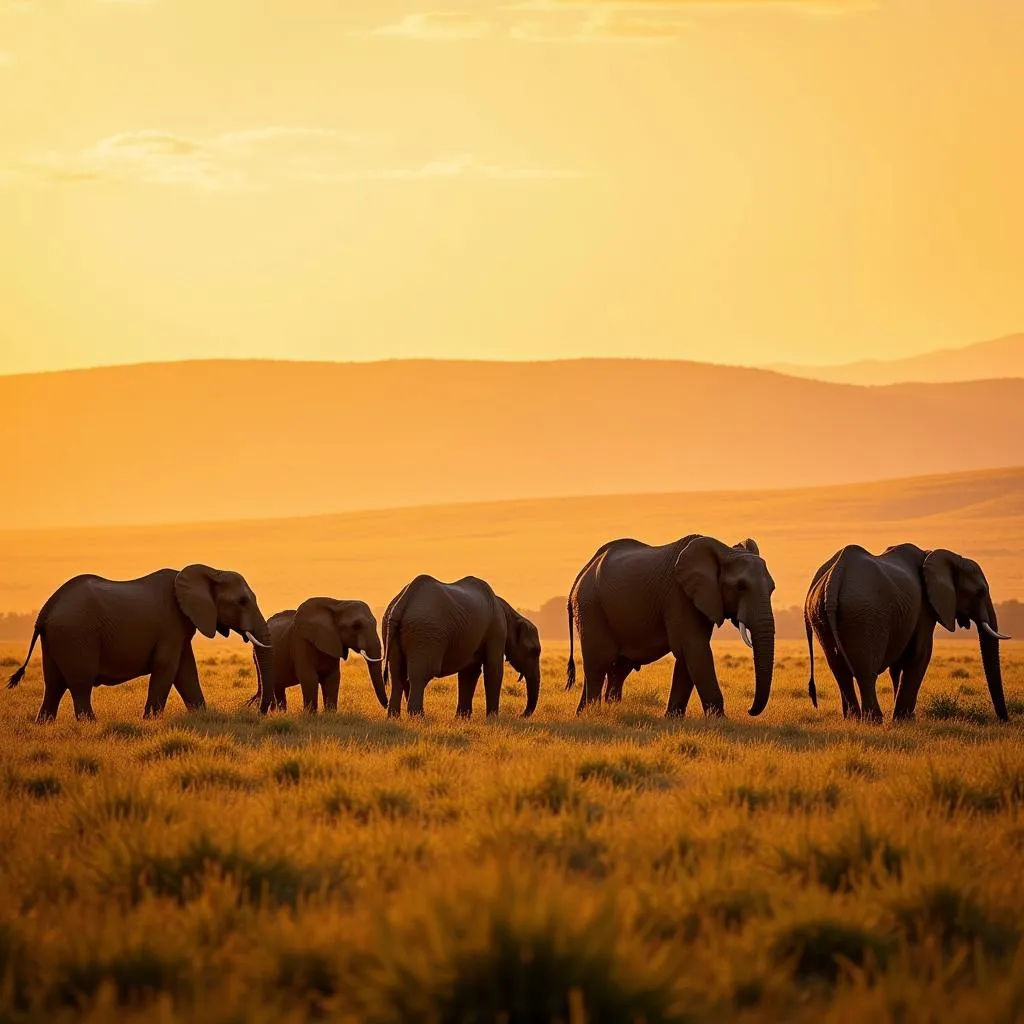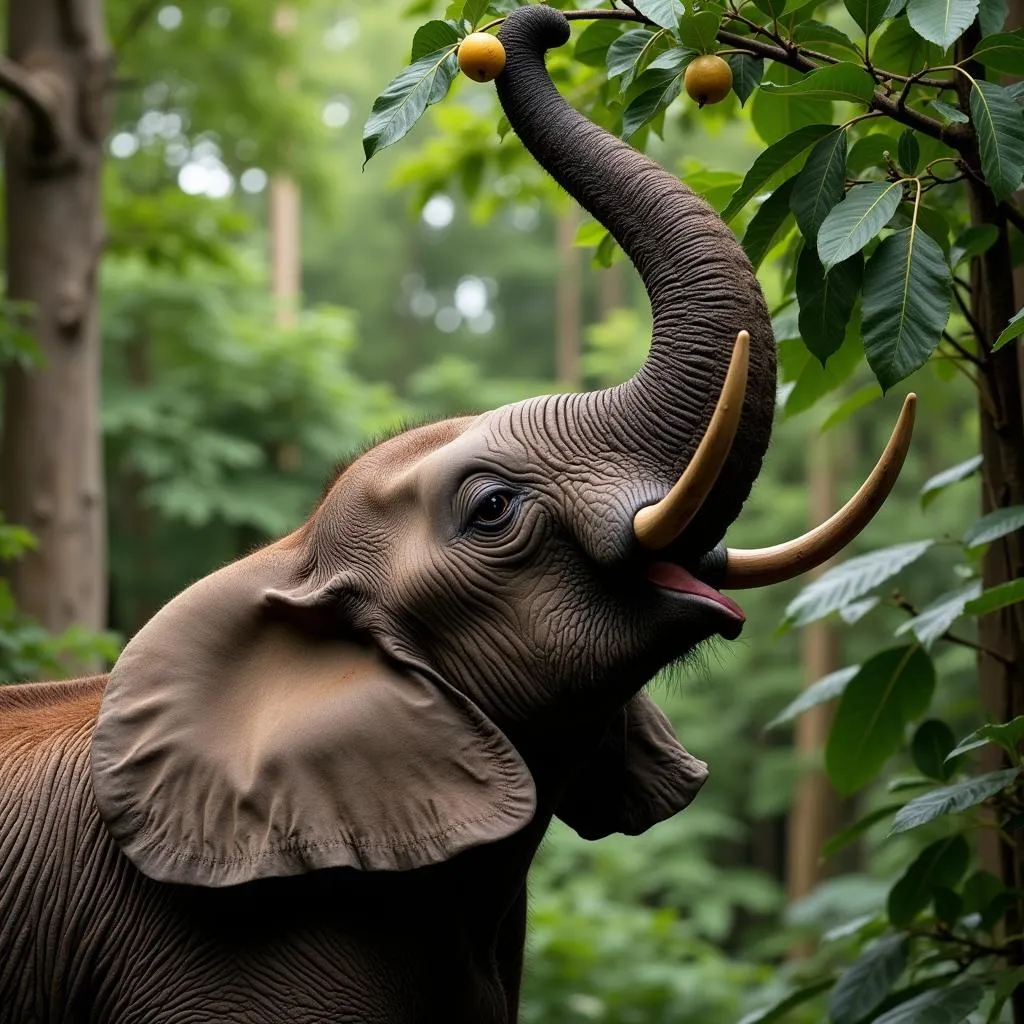African Elephants in Their Habitat: A Journey Through Savannas and Forests
African elephants, the largest land mammals on Earth, are a sight to behold. Their massive size, gentle nature, and intricate social structures make them one of the most captivating creatures on the planet. Understanding African elephants in their habitat is key to appreciating their ecological role and the challenges they face.
 African elephant family grazing in the savanna
African elephant family grazing in the savanna
The Two Types of African Elephants
While often spoken of as one species, there are actually two distinct types of African elephants: the African bush elephant (Loxodonta africana) and the African forest elephant (Loxodonta cyclotis). Although closely related, they differ in size, habitat preference, and even some physical characteristics.
African Bush Elephants: Kings of the Savanna
The African bush elephant, true to its name, thrives in the open savannas and grasslands of sub-Saharan Africa. They are the larger of the two species, with males reaching up to 13 feet tall and weighing over 6 tons. Their large ears, which they flap to regulate body temperature, are a characteristic feature.
African Forest Elephants: Guardians of the Congo Basin
African forest elephants, as their name suggests, are primarily found in the dense rainforests of Central Africa, particularly in the Congo Basin. They are smaller than their savanna counterparts, rarely exceeding 9 feet in height. Their tusks are straighter and point downwards, an adaptation for navigating dense vegetation.
 African forest elephant feeding on a fruit tree
African forest elephant feeding on a fruit tree
A Day in the Life of an African Elephant
African elephants are highly social animals, living in herds led by a matriarch, usually the oldest and most experienced female. Their days revolve around foraging for food, with adults consuming up to 300 pounds of vegetation daily. They also play a crucial role in shaping their habitat, creating clearings in forests and digging waterholes that benefit other animals.
Threats to African Elephants
Sadly, these magnificent creatures face numerous threats. Poaching for their ivory tusks remains a significant danger, although conservation efforts and international trade bans have helped curb the illegal wildlife trade. Habitat loss due to human encroachment and climate change is another pressing concern. As their habitat shrinks, elephants are forced into closer contact with humans, leading to conflict.
The Importance of Conservation
Protecting African elephants in their habitat is paramount. Conservation efforts focus on anti-poaching patrols, habitat preservation, and promoting human-wildlife coexistence. Educating local communities about the importance of elephants as keystone species is crucial for their long-term survival.
The Future of African Elephants
The future of African elephants hangs in the balance. By understanding their ecological importance, supporting conservation initiatives, and advocating for their protection, we can help ensure that these gentle giants continue to roam the savannas and forests of Africa for generations to come.

